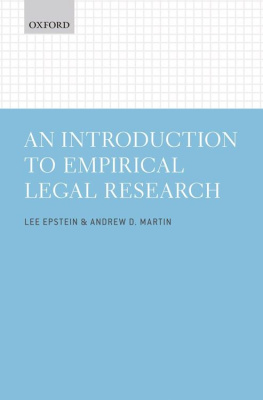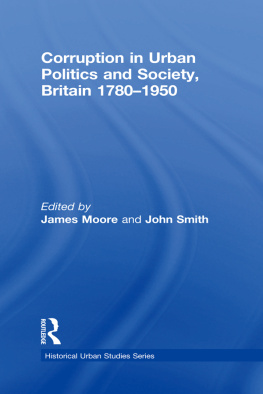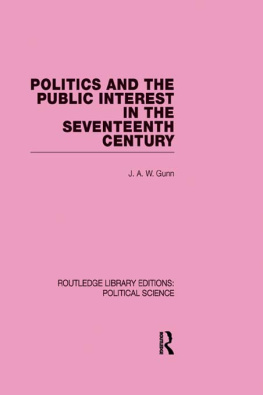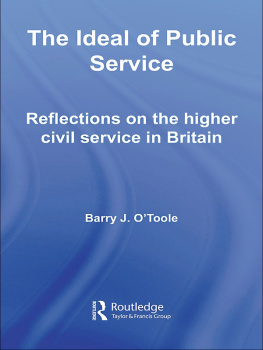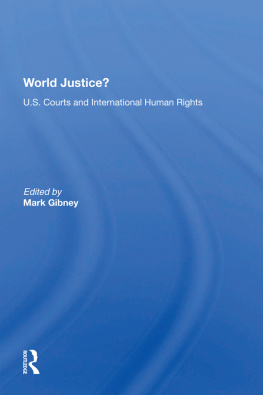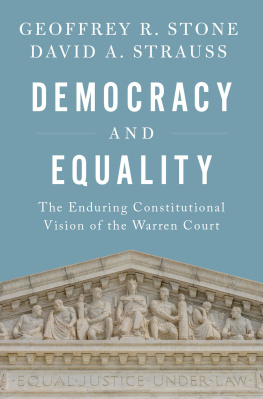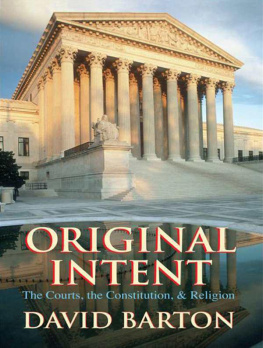PUBLIC INTEREST LAW
ORGANIZATIONS AND INTEREST GROUPS
(VOL. 4)
GARLAND REFERENCE LIBRARY OF SOCIAL SCIENCE
(VOL. 693)
Organizations and Interest Groups
Series Editor: James S. Bowman
1. The General Accounting Office: An Annotated Bibliography
Robert L. Hollings
2. Consultants and Consulting: Sources and Resources
Donald Levitan
3. The American Civil Liberties Union: An Annotated Bibliography
Samuel Walker
4. Public Interest Law: An Annotated Bibliography and Research Guide
Lee Epstein, Tracey E. George, and Joseph F. Kobylka
PUBLIC INTEREST LAW
An Annotated Bibliography and Research Guide
Lee Epstein
Washington University-St. Louis
Department of Political Science
Tracey E. George
Stanford University
Law School
Joseph F. Kobylka
Southern Methodist University
Department of Political Science
First published 1992 by Garland Publishing, Inc.
Published 2021 by Routledge
2 Park Square, Milton Park, Abingdon, Oxon OX14 4RN
605 Third Avenue, New York, NY 10017
Routledge is an imprint of the Taylor & Francis Group, an informa business
1992 Lee Epstein, Tracey E. George and Joseph F. Kobylka
All rights reserved. No part of this book may be reprinted or reproduced or utilised in any form or by any electronic, mechanical, or other means, now known or hereafter invented, including photocopying and recording, or in any information storage or retrieval system, without permission in writing from the publishers.
Notice:
Product or corporate names may be trademarks or registered trademarks, and are used only for identification and explanation without intent to infringe.
Library of Congress Cataloging-in-Publication Data
Epstein, Lee, 1958
Public interest law : an annotated bibliography and research guide / Lee Epstein, Tracey E. George, Joseph F. Kobylka.
p.cm. (Organizations and interest groups ; vol. 4)
(Garland reference library of social science ; v. 693)
Includes bibliographical references and index.
ISBN 0-8240-7636-2
1. Public interest lawUnited StatesBibliography.I. Title.II. Series.III. Series: Garland reference library of social science ; v. 693.
KF299.P8E671992
016.34973dc20
ISBN 13: 978-0-8240-7636-8 (hbk)
To Marilyn and Jerry Gould
-L.E.
To Marjorie George
-T.E.G.
To Keith, Jeffrey, and Kevin Kobylka
-J.F.K.
Summary of Contents
Expanded Contents
The modern era is one of organizations, and as we approach the next century there is little evidence that the importance of institutions in society will diminish. As they have grown in scope and number so has material published by and about them. Yet managers, academicians and their students, and researchers do not have ready access to information about these significant social entities. In an increasingly complex world of organizations, more and more people need such data to assist in defining and solving problems.
The lack of a comprehensive information system has frustrated users, disseminators, and generators of knowledge; the documentation and control of the literature on organizations have been generally neglected. Indeed, major gaps in the development of the literature, the bibliographical structure of the field, have evolved.
Garland Publishing, Inc., has inaugurated the present series as an authoritative guide to information sources on the subject. It seeks to consolidate published material on a wide variety of public, private, and non-profit organizations including: (a) federal agencies, Congressional committees, the judicial branch, and international bodies; (b) corporations, interest groups, trade unions, and consulting firms; as well as (c) professional associations, scientific societies, and educational institutions.
Each book will be compiled by one or more specialists in the area. The authorspractitioners and scholarsare selected in open competition from across the country. They design their work to include an introductory essay, a wide variety of bibliographic materials, and, where appropriate, an information resource section. Thus each contribution in the collection provides a systematic basis for managers and researchers to make informed judgments in the course of their work.
Since no single volume can adequately encompass such a broad, interdisciplinary subject, the series is intended as a continuous project that will incorporate new bodies of literature as needed. Its titles represent the initial building blocks in an operating information system for understanding organizations and society. As an open-ended endeavor, it is hoped that not only will the series serve to summarize knowledge in the field but also will contribute to its advancement.
This collection of book-length bibliographies is the product of considerable collaboration on the part of many people. Special appreciation is extended to the individual contributors in the series and to the anonymous reviewers of each of the volumes. Inquiries should be made to the Series Editor.
James S. Bowman
School of Public Administration and Policy
Florida State University
This volume convincingly lays to rest two incorrectly held beliefs that have long impeded scholarly analysis of the role of courts and litigation in American politics: 1) that group resort to the courts is a rather recent phenomenon resulting from actions of the Warren Court and the Civil Rights Movement; and 2) that unique and distinctive features of the judiciary somehow place it beyond or outside analytic frameworks used to study and analyze the role, nature and functioning of other governing institutions such as the Congress and the presidency.
To be sure, the title of the volume -- Public Interest Law Sourcebook -- accurately describes its central purpose and method as descriptive and informative. But the overall context in which this description and information are cast belies a mere cataloguing of the actors involved and actions taken. Indeed, to their credit, the authors in a very rich, informative, and skillfully written introductory chapter tactfully call our attention to earlier very basic theoretical frameworks which, if followed, might have allowed us to overcome such impediments and understand more clearly how various actors attempt to use the judicial system and the law to achieve their policy objectives.
Indeed, though interest group use of the courts has been evident since the 1800s, scholarly research and attention were hardly existent prior to the surge in public interest law in the 1960s. What is particularly surprising about the dearth of studies prior to the 1970s, say the authors, is that some of the most important and early works of modern day political science -- those of Arthur Bentley and David Truman -- included discussions of interest group involvement with the judiciary (p. 17).


